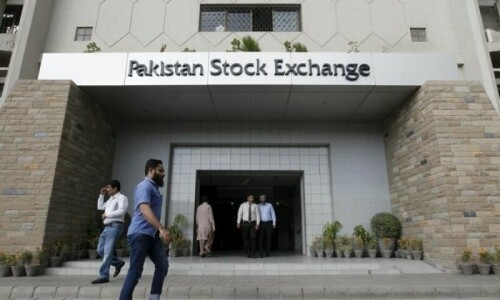
One would imagine that instability in Bangladesh has left space for Pakistan’s textile exports to grown. But over the past two decades there have been several such opportunities that Pakistan has made little use of.
India, Pakistan, Bangladesh and Vietnam had a similar share in the US’s textile imports, but have surged forward since then. There was a time in the 2010s when the then finance minister Ishaq Dar was controlling the exchange rate with textile exporters crying out for rupee devaluation to boost exports. Energy costs have always been an ever-lasting thorn on the side of textile manufacturers. Easy access to finance and lack of liquidity due to stuck refunds have been common laments.
As a result, Pakistan’s share in US’s apparel exports has remained roughly stagnant since at least 2004. India and Bangladesh have doubled their share of exports while Vietnam has leapfrogged ahead. Textile sector has always enjoyed the patronage of the state through incentives such as access to subsidies, cheaper finance, and rebates. But as any textile exporter will tell you, none of this was enough because of a lack of ease of doing business, a woe shared across the manufacturing sector.
There have been at least three Textiles and Apparel Policy plans to boost exports. Much like the five year plans that are paperwork exercises that deliver nothing, there have been no significant change in Pakistan’s share of exports on the global stage.
The lack of research and development in the textile sector is another handicap to exports. The world is shifting towards synthetic fabrics whereas Pakistan’s leans towards cotton because of its agrarian roots. In that even, the country’s growth of cotton has stagnated, increasing reliance on imports. A cotton base also prevents significant product diversification, which is an important consideration as global buyers move toward sourcing from vendors and countries with broader product availability to reduce complexity and costs.
Anecdotal evidence suggest that sectors rather ignored by the government do well. Examples include Sialkot’s sports good sector, maize crop that has become an agriculture success story, and the growth of manufacturing of cables, as Fast Cable’s initial public offering seems to suggest. On the contrary, favoured sectors such as sugar with its minimum price and abundance of sugarcane mills, the auto sector and the textile sector are the most in the news listing their grievances. It reminds one of the spoilt sons of the family who do little while those who had to overcome hardships found success in life.
Published in Dawn, The Business and Finance Weekly, August 19th, 2024














































Dear visitor, the comments section is undergoing an overhaul and will return soon.